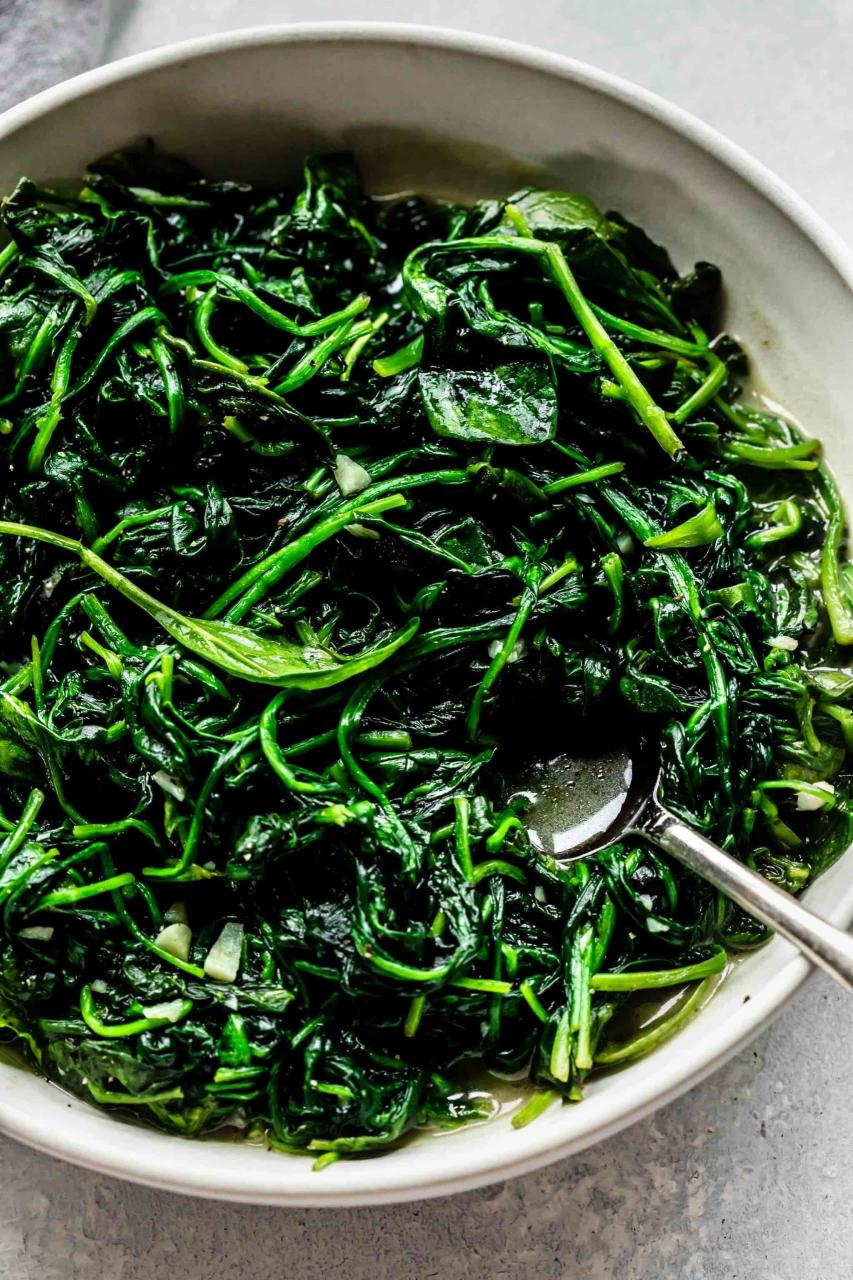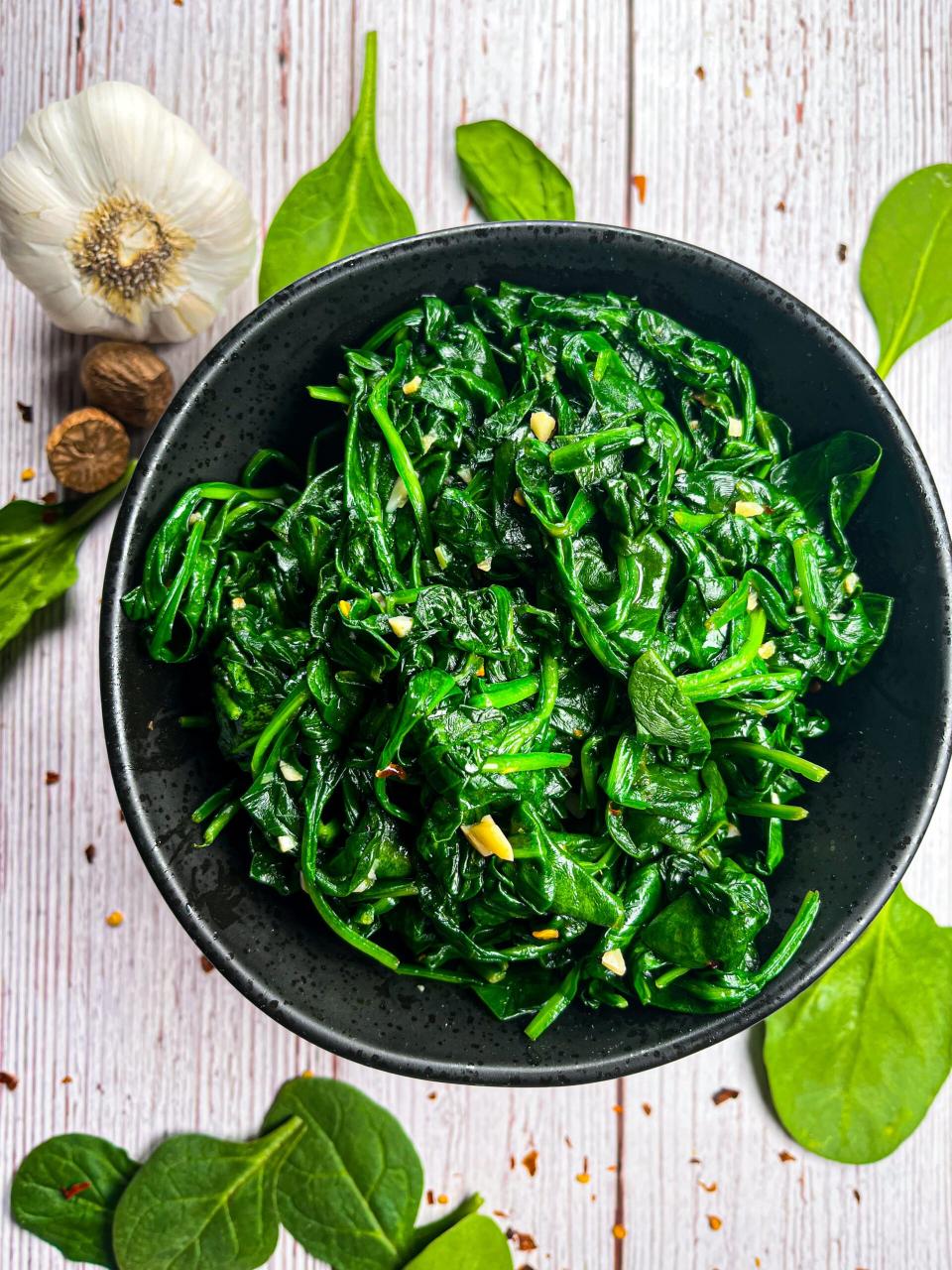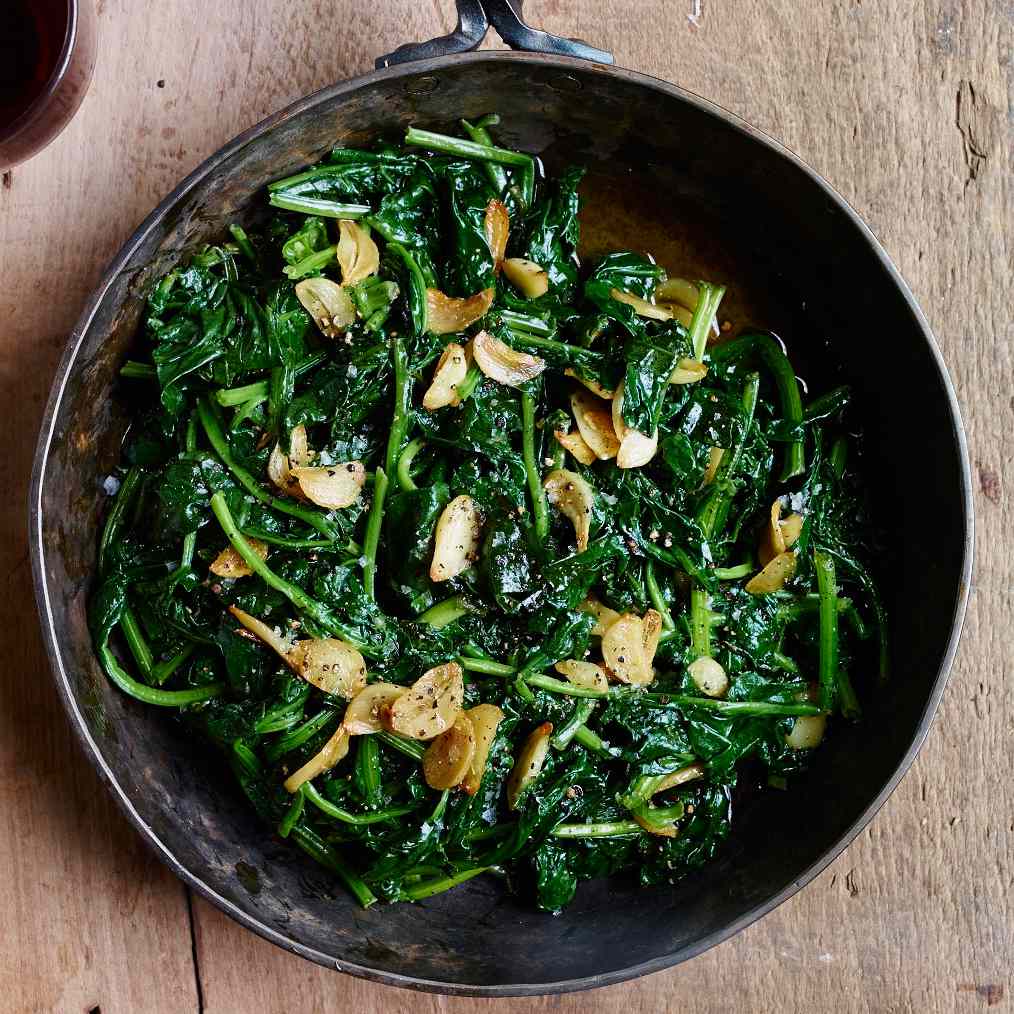Garlic spinach offers a simple yet profoundly flavorful and nutritious side dish that embodies the essence of healthful eating while delivering a burst of taste. This introduction delves into the culinary versatility, nutritional benefits, and cultural significance of combining spinach with garlic, showcasing how such a pairing enhances not only dishes but also dietary quality.
Garlic spinach is celebrated for its ease of preparation and compatibility with a wide array of cuisines. The dish essentially involves sautéing fresh spinach leaves in olive oil or butter with minced garlic until the spinach wilts and absorbs the aromatic flavors of the garlic. This preparation method preserves the delicate texture and natural taste of spinach while infusing it with the rich, pungent flavor of garlic. Garlic spinach can be served as a standalone side dish, incorporated into pastas, layered onto pizzas, or used as a nutritious filling in omelets and quiches, highlighting its adaptability in various culinary contexts.
Garlic spinach recipe


Garlic spinach
Equipment
- 1 pan
Ingredients
- 1/4 c. Mozzarella cheese
- 1/4 c. Goat cheese
- 1/4 c. Parmesan cheese
- 1 c. Heavy cream
- 2 lb. Spinach
- 3 Tbsp. Butter
- 4 Minced garlic cloves
Instructions
- When you are ready to get started on this recipe, bring out a bit skillet and melt together the garlic and the butter.
- Once those are nice and warm, add in the spinach and allow it some time to wilt. Once the leaves are wilting, take them out of the pan, place inside of a strainer, and then drain off the liquid that is leftover.
- Place some cream into this same pan before adding in all of the cheeses. Cook this on the lowest heat possible so that the sauce becomes thicker.
- When the spinach is drained of extra liquid and the cheese is nice and thick, add the spinach to this pan and coat it with the cheese.
- When it is time to serve, make up some cauliflower rice and serve these two together.
Cooking Tips about Garlic Spinach

- Select Fresh Ingredients: Choose fresh, vibrant spinach leaves, which are more flavorful and nutrient-rich. Look for garlic that is firm with no sprouts, as fresh garlic offers a more potent flavor.
- Pre-Wash Spinach: Spinach can be gritty, so it’s essential to wash it thoroughly in cold water to remove any soil or sand. You might need to rinse it several times until the water runs clear.
- Dry Spinach Well: After washing, ensure the spinach is well dried to prevent it from steaming when sautéed. A salad spinner works well for this, or you can pat the leaves dry with a clean kitchen towel.
- Use Good Quality Olive Oil: The flavor of olive oil contributes significantly to the dish. Opt for extra virgin olive oil for its richer taste and health benefits, including its antioxidants and heart-healthy fats.
- Slicing Garlic Thinly: Thinly slice the garlic rather than mincing it. This allows for more even distribution of garlic flavor and prevents it from burning easily during the sautéing process.
- Control the Heat: Sauté garlic on medium heat to gently coax out its flavor without burning it. Burnt garlic can impart a bitter taste to the dish.
- Cook Spinach Until Just Wilted: Spinach cooks down significantly and quickly. Add the spinach to the pan with garlic and oil, tossing frequently, and cook until just wilted. This preserves the texture and nutrients of the spinach while ensuring it’s flavorful.
- Seasoning: Simple seasonings work best. A pinch of salt and cracked black pepper enhance the natural flavors of the spinach and garlic. A squeeze of lemon juice added at the end of cooking can provide a refreshing acidity that lifts the entire dish.
Serving suggestions about Garlic Spinach

- Grilled or Roasted Meat: Pair Garlic Spinach with grilled chicken, fish, or steak. The simplicity of the spinach contrasts beautifully with the richness of the meat, offering a balanced and healthful plate.
- Quinoa or Couscous: Serve alongside a portion of quinoa or couscous. These grains make for a light yet filling addition, and the mild flavors will not overshadow the garlicky spinach.
- Integrated into Pasta Dishes: Toss Garlic Spinach into pasta for an easy way to add greens to your meal. It pairs well with both cream and tomato-based sauces, making it a flexible ingredient.
- Egg Dishes: For a brunch option, incorporate Garlic Spinach into omelets, frittatas, or scrambled eggs. The garlicky flavor of the spinach adds depth to these simple egg dishes.
- Stuffed in Portobello Mushrooms: Use Garlic Spinach as a filling for Portobello mushrooms. Top with breadcrumbs and Parmesan cheese for a delicious vegetarian entrée that’s baked until golden.
- Bean Soups and Stews: Add cooked Garlic Spinach to bean soups or stews during the last few minutes of cooking for an added nutritional boost and a pop of color.
- Rice Dishes: Mix into a pilaf or risotto towards the end of the cooking process. Garlic Spinach not only adds a vibrant green hue but also infuses these dishes with its aromatic flavor.
Top 5 FAQs about Garlic Spinach

- What are the health benefits of Garlic Spinach? Garlic Spinach combines the nutritional powerhouses of spinach and garlic, making it exceptionally beneficial for health. Spinach is rich in vitamins A, C, and K, iron, calcium, and antioxidants, which support eye health, bone health, and offer anti-inflammatory and anti-cancer benefits. Garlic provides immune system support, cardiovascular benefits, and may help reduce blood pressure and cholesterol levels.
- Can I use frozen spinach instead of fresh for making Garlic Spinach? Yes, you can use frozen spinach to make Garlic Spinach; however, the texture and flavor might differ slightly from using fresh spinach. Frozen spinach tends to be more wilted and condensed, so you’ll need to thaw and drain it thoroughly to remove excess water before cooking. Adjustments in cooking time may be necessary, as frozen spinach might require less time to sauté since it’s already blanched.
- How can I adjust the flavor of Garlic Spinach if I find raw garlic too strong? If the pungent taste of raw garlic is not to your liking, you can mellow its flavor by sautéing it gently in olive oil or butter before adding the spinach. This process, known as sweating, helps soften the garlic and release its flavors more subtly into the dish. You can also slice the garlic thinly or use less garlic than the recipe calls for, adjusting to your taste preference.
- What dishes pair well with Garlic Spinach? Garlic Spinach is highly versatile and can accompany a wide range of dishes. Some excellent pairings include grilled or roasted meats like chicken, fish, or steak; as a nutritious addition to pasta, quinoa, or couscous dishes; integrated into egg dishes such as omelets or frittatas; or even used as a topping on homemade pizzas. It can also serve as a vibrant side for rice dishes or stuffed into Portobello mushrooms for a vegetarian option.
- Are there any variations or additional ingredients I can include in Garlic Spinach for more complexity? To add more textures and flavors to Garlic Spinach, consider incorporating ingredients like pine nuts, sun-dried tomatoes, or chili flakes for a spicy kick. For a touch of creaminess, sprinkle some grated Parmesan cheese, crumbled feta, or goat cheese over the cooked spinach just before serving. A squeeze of lemon juice added at the end of cooking can also provide a refreshing acidity that lifts the entire dish. These variations can help personalize the dish to suit your taste preferences.
In conclusion, garlic spinach stands as a testament to the beauty and benefit of combining simple ingredients. It represents a fusion of taste and health, offering a versatile side dish that complements an array of main courses. As we continue to seek out meals that nourish the body and delight the senses, garlic spinach remains a timeless choice, bridging culinary tradition with contemporary wellness trends. Whether enjoyed as part of a sophisticated dinner or a quick weeknight meal, it showcases the enduring appeal of cooking with wholesome, flavorful ingredients.
Leave a Reply